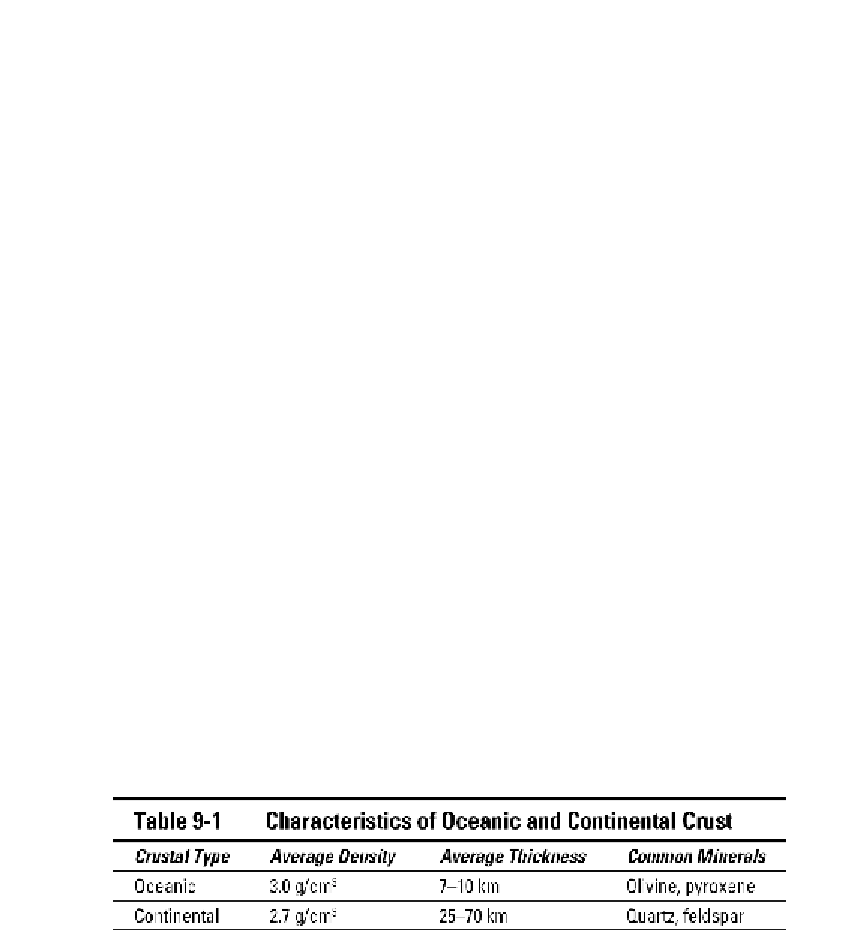Geology Reference
In-Depth Information
Covering the earth is the
lithosphere,
a layer of crustal rock that I describe in Chapter 4.
All the rocks in the lithosphere are made of basically the same stuff: silicate minerals
(see Chapter 6). However, there is a slight difference between the minerals found in
crustal rocks under the oceans and those found in crustal rocks that make up the con-
tinents. In this section, I describe the differences between these two types of crust and
discuss a little about
why
they are different.
Dark and dense: Oceanic crust
The lithosphere beneath the oceans is called
oceanic crust.
Oceanic crust is created
from molten rock (magma) rich in dark-colored, dense minerals. The molten rock erupts
along ridges in the ocean (
mid-ocean ridges,
which I describe later in this chapter and in
Chapter 10) and cools, forming basalt and gabbro rocks (see Chapter 7). Because of the
types of minerals that comprise these rocks (such as olivine and pyroxene; see Chapter
7), the oceanic crust is dark in color and relatively dense compared to continental crust.
The average density of oceanic crust is 3.0 g/cm
3
. Oceanic crust is also relatively thin
and about the same thickness all around the world — about 8 kilometers (5 miles).
Thick and fluffy: Continental crust
The continents are composed of
continental crust.
Continental crust is made of the less
dense minerals typical of granite-type rocks, which likely began as plutons (see Chapter
7). The thickness of continental crust varies widely. In some areas, it is relatively thin,
about 25 kilometers (15.5 miles) But in mountainous regions it may be up to 70 kilomet-
ers (43.5 miles) thick. Its average density is 2.7 g/cm
3
.
Table 9-1 summarizes the differences between oceanic and continental lithosphere.

